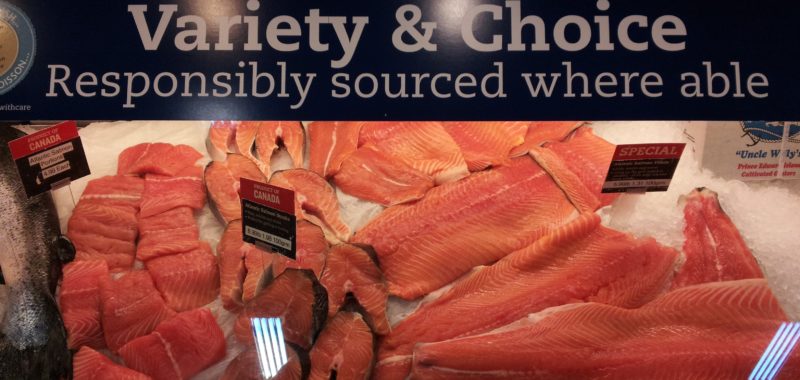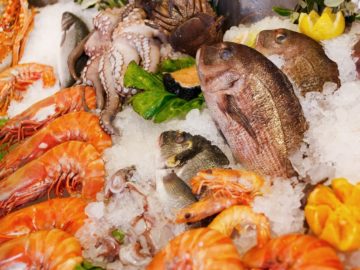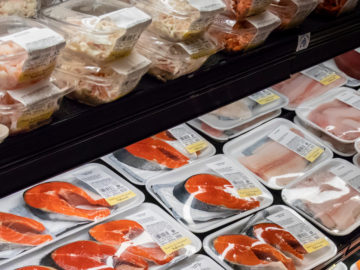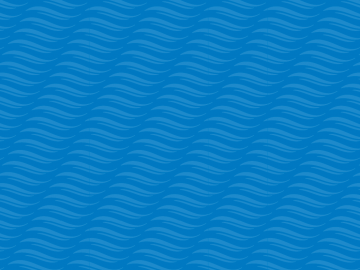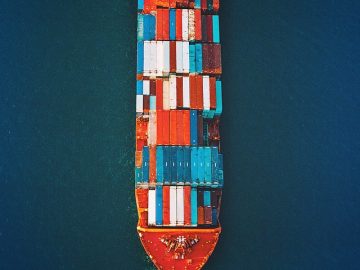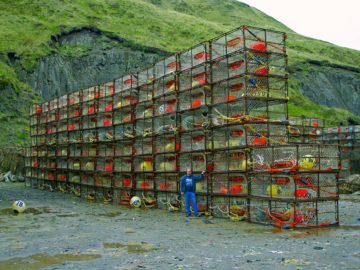SeaChoice is in the process of pivoting into our next decade of work to continue to improve the sustainability of seafood produced in, and imported into, Canada. After achieving significant progress in the retail landscape between 2006 and 2016, with many of our retail partners reaching their sustainable seafood commitments, SeaChoice is setting a new and ambitious goal of increasing sustainability throughout the entire seafood supply chain – from water to table.
Since it’s founding in 2006, SeaChoice’s focus has been to provide informative resources on seafood sustainability at various levels of the seafood supply chain – from harvesters to consumers. Based on scientific assessments, SeaChoice has created easy-to-use tools that help Canadians make the best seafood choices. SeaChoice has provided advice on seafood purchasing based on environmental sustainability, which is communicated as “red”(Avoid), “yellow” (Some Concerns) and “green” (Best Choice).
One of SeaChoice’s main initiatives has been working directly with Canadian retailers to establish sustainable seafood purchasing policies and to implement market-facing sustainable seafood programs. SeaChoice has always provided this service free of charge, and links this work to its member organizations that have extensive expertise in sustainable fisheries and aquaculture.
Over the past decade, SeaChoice’s retailer partnerships have been successful in shifting seafood procurement away from unsustainable sources, and in developing consumer awareness of sustainable seafood options in Canada. As of December 2016, SeaChoice is proud to say that our retail partners have either met or almost met their commitments. SeaChoice values and congratulates our retail partners for their important efforts and ongoing commitment to sustainable seafood procurement and consumer education.
The success of our retailer commitments means we have reached a limit relating to our ability to help them further influence change on the water, as the majority of “red-ranked” seafood products have already been replaced with more sustainable alternatives. In order to ensure that sustainable seafood demand and supply continue to increase in Canada, SeaChoice recognizes that it is necessary to increase pressure at different places along the seafood supply chain, instead of primarily focusing at the retailer level.
In the shift away from holding direct retail partnerships, SeaChoice is taking several paths to continue improving the sustainability of seafood available in Canada. Moving forward, SeaChoice will be directing more effort and resources into:
- Transparency and traceability, seeking improvements in seafood labelling regulations.
- Verifying seafood labelling through DNA testing in Canadian markets.
- Using market leverage to improve some of the least sustainable fisheries and aquaculture production.
- Providing retailers the tools and incentives necessary to improve their sustainable seafood commitments and create their own policies in-house.
This work will be supported by SeaChoice member organization engagement in fisheries and aquaculture management, policy improvements and incentives for improved fishing and farming practices.
To this end, SeaChoice has already marked many significant accomplishments over the past year, including the following:
Seafood labelling and traceability:
- SeaChoice has been focused on improving seafood labelling across Canada. Improved seafood labelling in Canada means that consumers can get all of the information they need at the point of sale – allowing them to make purchasing decisions based on their values.
- We released our report card on how Canadian seafood labelling legislation compares with the US and EU, and launched an associated website at labelmyseafood.ca.
- We contributed to the Canadian government request for input on improved food labelling and supply chain traceability (available here and here).
- We launched a nationwide citizen science project focused on testing the DNA of seafood sold by major retailers across Canada, with an aim of evaluating the adequacy of current labelling practices.
Continuing market leverage to achieve on the water change:
- Canada continues to produce and import seafood that is considered “red-ranked”. In some cases the market is not the right lever for making change in these fisheries or aquaculture operations. SeaChoice has instead focused efforts for these species on other areas in the supply chain, such as fisher behaviour, fisheries management, and tracking conditions of eco-certifications to ensure that these fisheries and aquaculture operations improve over time.
Sustainable seafood commitments:
- SeaChoice has been working with retailers across Canada to internalize their seafood commitments, building in long-term capacity on tracking, reporting and improving their sustainable seafood options.
- In order to ensure retailers continue to improve their supply chains, we are developing a tool to track how Canadian retailers progress against a suite of measures, referred to as the Common Vision for Seafood Solutions. The Common Vision has been agreed by ENGOs across North America to be the key elements of sustainable seafood procurement.
SeaChoice is excited about the next steps in the evolution of the seafood movement in Canada, and encouraged by our success over the past decade. Over the coming months there will be changes in stores as SeaChoice moves away from point-of-sale labelling with retailers. There will also be changes to the SeaChoice website and iPhone App as we transition away from ranking the sustainability of seafood. Indeed SeaChoice will be launching a whole new website this fall that profiles our new initiatives.
With our retailers reaching their seafood commitments, it is now time to dig even deeper into improving the sustainability of Canada’s seafood supply, and to focus our efforts where the greatest leverage can be found. SeaChoice and its member organizations look forward to continued improvements in the sustainability of seafood available to all Canadians. The future of our coastal communities, national food security and the health of our vast marine ecosystems is at stake in all of the work that we do.
You can find a press release about the SeaChoice transition here.
